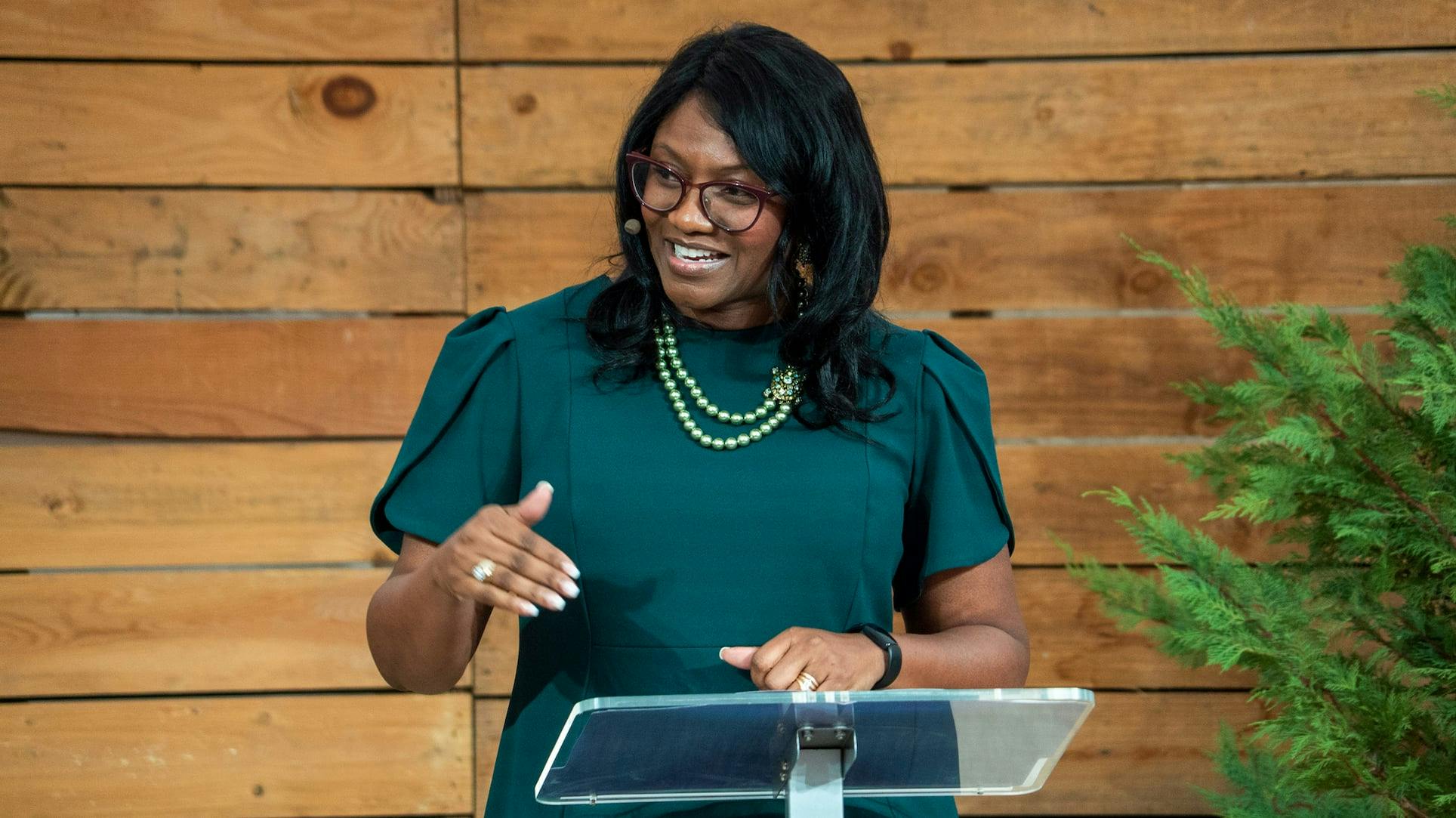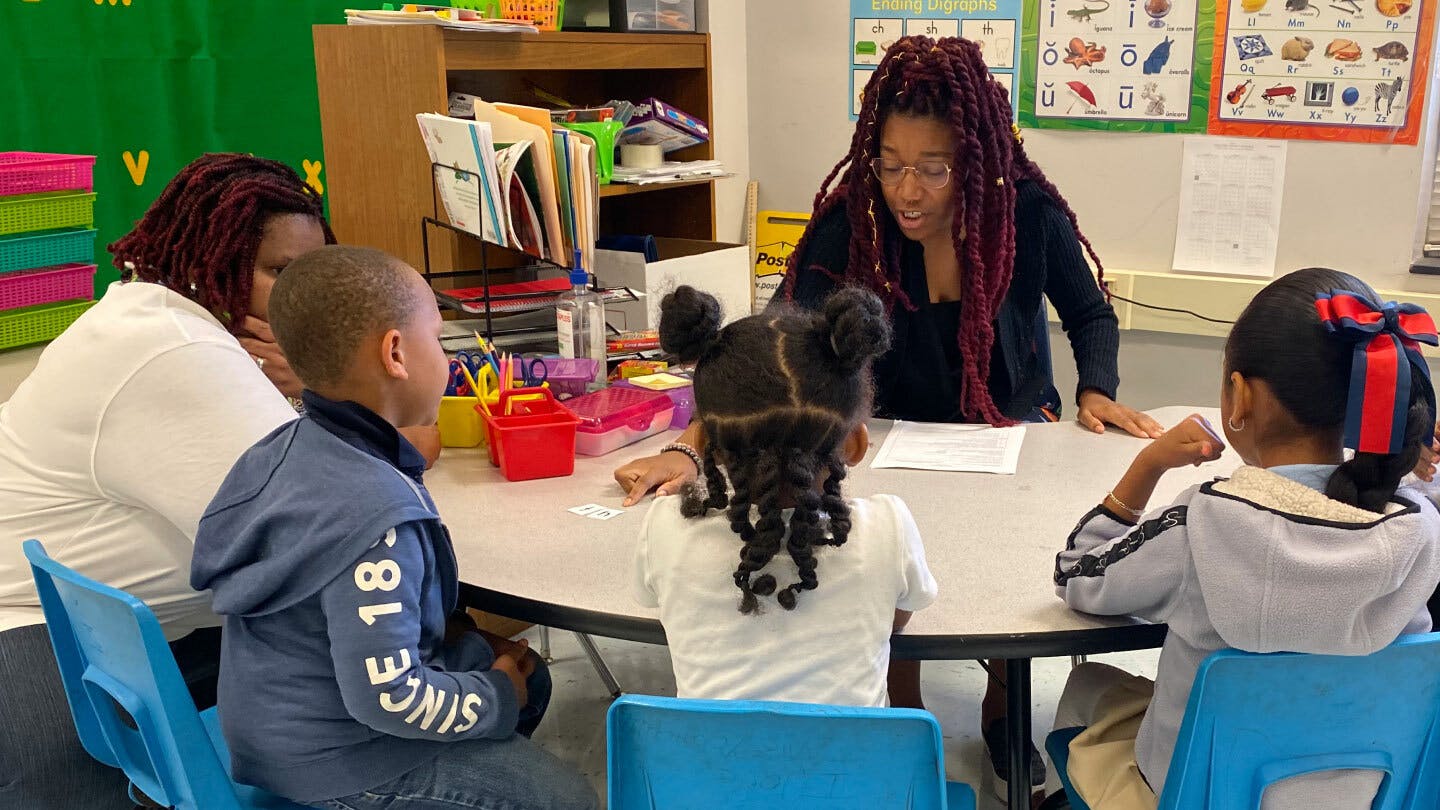How to build a teacher workforce that looks like America's student body
As the Dean of the School of Education and Human Development at Hampton University from 2007 until 2016—the historically-Black college in Virginia where Booker T. Washington and Wanda Sykes got their degrees—Cassandra Herring was excited when she received an invitation for a meeting in Washington, D.C., about diversifying the teacher workforce. As a Black woman who helped triple her school’s enrollment, reinvigorate its faculty, and earn the highest accommodation from its accrediting body, this was an issue near and dear to her heart—and an area where she had so many ideas.
But when she got to the meeting, Herring couldn't help but notice she was the only Dean there from a minority-serving institution (MSI). This didn't make sense, she thought. After all, MSIs are a crucial pathway to a teaching career: they constitute only 18% of all teacher preparation providers, but prepare nearly half of the nation's teachers of color.
It was the moment that ultimately inspired Herring, an Emerson Collective Dial Fellow, to found BranchED. More formally known as the Branch Alliance for Educator Diversity, the organization is a national nonprofit clearinghouse on strategy for developing high-quality educator preparation programs at institutions that produce the country's most diverse educators.
Herring herself didn’t have a teacher of color until she was in high school. And while the numbers have improved since then, this is still the reality for the majority of students attending U.S. public schools. While 51% of American public school students are kids and teenagers of color, only 20% of their teachers are, too. “Beyond role models, America's children deserve educators and educational environments that value and embrace diversity, and that are equipped to leverage diversity as an asset in the classroom,” Herring says.
This isn’t just an issue of representation. It’s an issue affecting every student and the quality of their education. “We know that students who are taught by a more diverse set of teachers have higher high school completion rates, higher rates of going to college, and lower rates of discipline problems,” Herring says. “We even know that there's an increased level of cultural dexterity.” In other words, having diverse teachers prepares students to live and work in a multilingual, multiracial, and multicultural society.

An educator shares how we can diversify the teacher workforce by supporting teacher preparation programs at Minority Serving Institutions.
BranchED aims to increase teacher diversity across the U.S. And they’ve developed a unique model for how to do it. Here are five principles driving this work.
1. Start with minority-serving institutions.
Efforts to diversify the teacher workforce often focus on “dangling carrots”—tactics like offering scholarships or signing bonuses that will draw in a larger, more diverse pool of budding teachers. At BranchED, however, Herring wanted to try pressing a different kind of lever. She wanted to focus on strengthening teacher prep programs at federally designated MSIs like Black colleges and universities (HBCUs), Hispanic-serving institutions (HSIs), tribal colleges and universities (TCUs), and AAPI-serving schools.
BranchED works to make these programs even better, helping them improve everything from their enrollment to their curriculum to their data collection and efficacy. “We can really leverage the expertise of these institutions in pushing the entire field on how we attract, prepare, and retain teachers of color,” Herring explains. “Quite honestly, this is not an issue we can solve without MSIs.” And while BranchED’s focus has primarily been on MSIs, they’re increasingly working with other higher ed institutions that enroll 50% or more students of color.
2. Work closely with faculty and administrators.
At Hampton University, Herring spent a decade working out what to focus on and how to put better standards in place for teacher preparation. Through it all, she noticed administrator friends at other schools asking the same questions. “The challenges we were grappling with were not as unique as we thought,” she says.
BranchED helps teacher prep programs get a clear picture of what they’re doing well, identify where they need improvement, and make an actionable plan to build capacity. The process begins with evaluation across BranchED’s six areas of focus: partnerships with local school districts; data-driven decision making; candidates’ mastery of content; access to practice-based instruction; inclusivity training; and social support for candidates. From there, depending on identified needs, BranchED offers training, technical assistance, and customized coaching to help programs reach their goals. In some cases, they even provide catalytic funding to help a program improve and innovate.
Herring points to BranchED’s work with North Carolina A&T State University as an example. “They brought us in for what we call a ‘critical friend site visit,’ where we take a look at just about everything going on and then offer observations.” One of the things BranchED noticed: that subject-area instructors were siloed—from each other and from the faculty in corresponding university departments. They also realized little data was being collected that could inform the program’s approach. “We walked them through looking at their data and improving their faculty instructional practice,” says Herring. “We co-created a three year transformation plan. And they really knocked it out of the park.”
The college now does curriculum mapping, with instructors working together, including with other faculty in their field. And the school not only collects more data and makes a practice of using it, but candidates are taught to do this, too.
3. Teach teachers to embrace inclusivity and cultural relevance.
For years, teacher prep has focused on color and gender blindness. “There was a feeling that if we strip away the uniqueness of young people and focus on all students having access to the same curriculum, we would be more fair,” says Herring. “But the challenge is that not all students are the same. By stripping away difference, we alienated people. We didn't allow them to bring their whole selves into the classroom.”
BranchED makes sure new teachers are trained to be aware of and sensitive to differences in the classroom—and to treat those differences as assets. They encourage teachers to interact with families and local communities, and bridge those experiences into their lesson plans. “We want to teach on grade level. We want to have a rigorous curriculum. But we also want to make sure that it is accessible for young people.” Herring says.
She gives the example of an MSI graduate who was teaching Social Studies at a school in California with a largely Hispanic student population. On the first day of class, she asked her students to draw what a great American looked like. Most students drew pictures of George Washington and other rich white men. The teacher wasn’t thrown by this; she’d expected it. She had come armed with photos of great Americans of color, who looked more like her students. “You could feel the energy in the room swell,” says Herring.
4. Work the multiplier effect.
BranchED is named for Mary Elizabeth Branch, the first woman of color to serve as president of a college in the United States, at Tillotson College in Austin, Texas, from 1930 to 1944. But its name is also a nod to the branches of a tree, which symbolize the strong multiplier effect of BranchED’s work. Since 2017, the organization has trained more than 800 faculty members and leaders at 198 MSIs across 38 states, Washington, D.C., and Puerto Rico. This, in turn, has improved the instruction of 25,000 new teachers per year. And as those teachers take their place in front of the classroom—or in the principal’s office, or guidance counselor’s office—the impact will ripple out to millions of students.
5. Tell a new story about the teaching profession.
Ultimately, says Herring, BranchED wants to change the story about who teachers are. “Young people are hearing that teachers are burnt out, that they aren't paid well, that they’re fleeing the profession. Those are the messages on the news, all the time,” says Herring.
But there are other stories to tell about teaching. Young people should know that teaching can be both meaningful and an economic ladder. Young people who are interested in technology should know that teaching can be an innovative, leading-edge job. And young people who want to make a difference should hear more often about how teachers lead on issues of social justice.
“I was always struck that, as a Dean at an HBCU, when I asked students ‘why teaching?’ many of them said, ‘I want to be the teacher I never had,’” she says. “It’s not because they had incredible, wonderful role models. They have a passion for righting the wrongs of education. They have a zeal to make it better, to be a part of the solution.”

